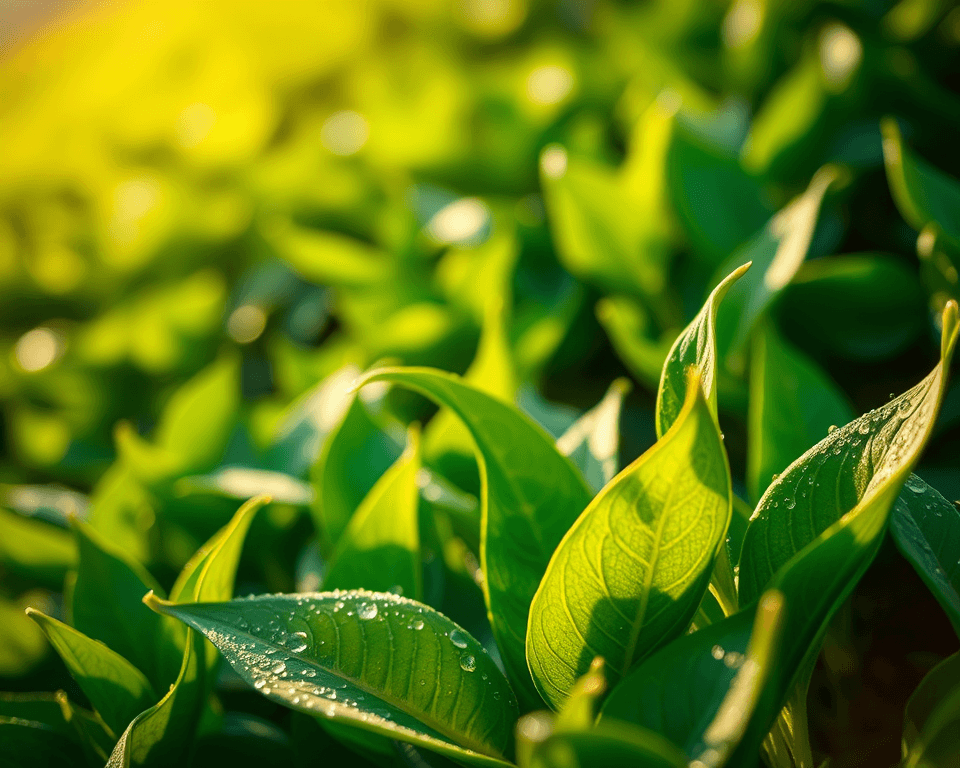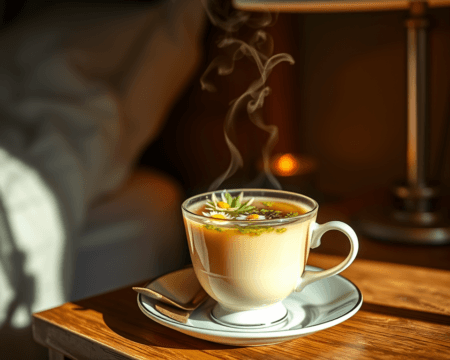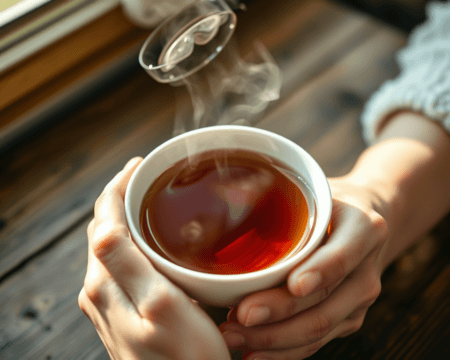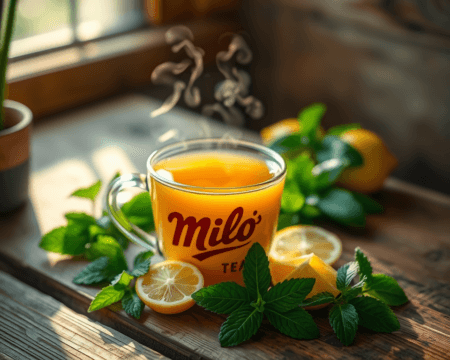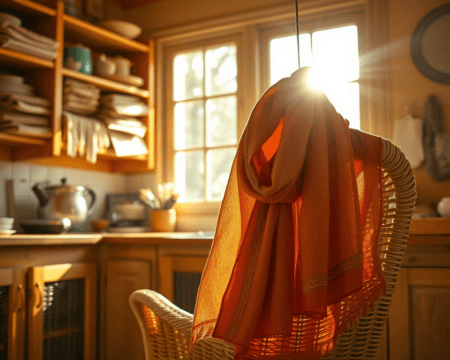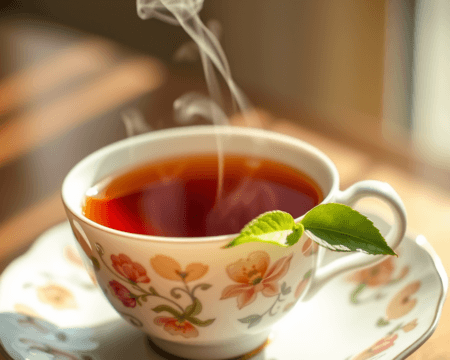Some of the best moments in life are steeped in a good cup of tea. Whether it’s that midday breather or an evening wind-down, Lipton Tea rolls up like a trusty sidekick, ready to refresh and revitalize. But ever wondered where this signature brew comes from? Hold onto your cups because we’re taking a full-speed tour of Lipton’s manufacturing process and the exciting journey of the tea leaves from farm to cup.
Key Takeaways
- Lipton tea is produced in several countries, including India, Sri Lanka, and Kenya, utilizing unique regional flavors.
- The tea production process focuses on sustainability, from sourcing to packaging.
- Quality assurance strategies keep Lipton tea consistent and flavorful.
- Consumer preferences are shifting toward sustainable and ethically sourced products, influencing the industry landscape.
Overview of Lipton Tea Manufacturing
History of Lipton Tea
Kicking things off, let’s talk about how Lipton carved its niche in the vast world of tea. Founded by Sir Thomas Lipton in the late 19th century, the brand took a revolutionary approach to tea selling. Unlike others who sold loose tea, Lipton packaged it, making tea accessible to the masses. This move didn’t just change the game for tea; it set the groundwork for modern branding in the beverage industry. We’re talking about a brand evolution that reflects a rich tea heritage intertwined with a commitment to quality.
Lipton draws from its historical significance, and this isn’t just about selling bags of leaves. The tea culture and origins run deep—it’s a story about connecting people through their love of tea while evolving with consumer trends.
Global Manufacturing Locations
Let’s pivot to the facts—the nitty-gritty of Lipton’s global operations. Lipton tea manufacturing locations span the globe. While you may grab a box at your local store, the tea itself usually comes from far-flung places like India, Kenya, and Sri Lanka. This geographical production isn’t arbitrary; it’s about utilizing the specific climates and soils that make each region’s tea distinct.
In India, vibrant Assam is a hotspot known for its bold black teas. Meanwhile, Sri Lanka (formerly Ceylon) is celebrated for its delicate varieties. And don’t sleep on Kenya—known for some of the world’s best black teas, its high altitudes contribute to the tea’s unique flavors. These manufacturing facilities are strategically located to harness the best quality leaves while supporting local economies.
Key Locations of Lipton Tea Production
Major Countries of Production
So, where exactly is all this Lipton goodness coming from? Let’s break it down:
India: The Assam and Darjeeling regions are instrumental in producing robust black and unique flavor teas that Lipton is proud to offer.
Sri Lanka: Ceylon tea takes the spotlight here, known for its bright, refreshing taste—definitely a crowd-pleaser.
Kenya: With its vast plantations, Kenya easily churns out high-quality black teas that pack a punch and are essential in Lipton’s blends.
Indonesia: This lesser-known player grows various tea types, adding to Lipton’s flavorful offerings.
These countries showcase varied tea cultivation regions and lead the charge as Lipton’s key manufacturing areas. It’s not just about producing tea; it’s about cultivating connections with the land and its people.
Map of Lipton Tea Manufacturing Sites
Visualizing where it all happens is critical. Imagine a map—dots marking where the magic happens in tea production across the globe. Each site has its unique characteristics that impact the final product.
Here’s a snapshot:
| Country | Notable Regions | Flavor Profile |
|---|---|---|
| India | Assam, Darjeeling | Bold, nuanced, floral |
| Sri Lanka | Nuwara Eliya, Dimbula | Bright, aromatic |
| Kenya | Kericho, Nandi Hills | Strong, brisk |
| Indonesia | Java, Sumatra | Mild, smooth |
This visual representation of Lipton’s manufacturing geography underscores how location impacts flavor and quality. Each region’s environment, climate, and soil bring out distinct nuances in the tea.
The Sourcing and Production Process of Lipton Tea
From Farm to Cup: The Tea Journey
The journey of Lipton, from farm to cup, speaks volumes about the brand’s ethos. The supply chain is nothing short of impressive. It starts with tea farmers meticulously tending to their plants. Leaf plucking typically happens between March and October, right when the leaves are young and tender—this is key for quality.
Then, tea leaves undergo processing. They’re withered, rolled, oxidized, and dried—don’t worry; this is not as tedious as it sounds! Here’s how it unfolds:
Withering: Freshly plucked leaves lose moisture, prepping them for rolling.
Rolling: Leaves are crushed to release their juices, initiating the oxidation process—this is where flavor development kick-starts.
Oxidation: This magic moment transforms the leaves, giving them rich color and taste.
Drying: Heat is applied to lock in flavors and halt oxidation, resulting in the final product ready for packaging.
Importantly, Lipton prioritizes sustainable sourcing practices at every stage. They focus on responsible production that’s kind to the environment and the communities involved. This farm-to-cup narrative creates a bond—consumers can sip with confidence, knowing their tea is thoughtfully produced.
Sustainable Practices in Tea Production
Speaking of sustainability, Lipton has committed itself to eco-friendly practices that make a difference. They’re not just about making profits; they’re about making an impact. Responsible sourcing means engaging with tea farmers, ensuring fair wages, and promoting social responsibility.
For instance, the brand invests in initiatives to improve farming methods, reduce chemical fertilizers, and enhance worker conditions. Plus, Lipton tracks its environmental impact through rigorous assessments, ensuring that every cup contributes to a greener future. You’ll love to know that those choices reflect in how the tea tastes too—better farming practices often yield richer flavors.
Impact of Production on Tea Flavor and Quality
How Location Affects Flavor Profiles
Ever wondered why some teas just hit differently? That’s because where the tea is grown matters! The concept of terroir—similar to how wine is influenced by its land—also plays a significant role in tea flavor profiles. Here’s what that looks like in the context of Lipton:
Altitude: Higher elevations typically yield teas with a classic, refined taste; think Ceylon tea grown in mountainous regions.
Soil Composition: The minerals and nutrients in the ground affect the richness and depth of flavors. For example, Kenya’s volcanic soil contributes to its boldness.
Climate: Temperature and rainfall directly influence growth cycles and flavor extraction. You can’t have great tea without the right weather!
Through these geographical impacts, Lipton manages to craft blends that offer characteristic flavors tailored to consumer preferences—a mark of quality you can trust.
Quality Assurance in Lipton Production
Quality control isn’t just good practice; it’s a principle at Lipton. Ensuring consistency involves rigorous processes—from testing leaves for quality at every processing stage to taste-testing blends like they’re conducting a science experiment. This meticulous attention to detail translates into what you experience in your cup.
To maintain the integrity of its brand, Lipton employs trained tea tasters who assess flavor, aroma, and quality. The goal? To deliver an exceptional tea experience with every bag you brew. This commitment to quality assurance fosters a brand reputation that resonates across the globe.
Insights and Trends in Tea Production
Consumer Preferences and Sustainability Trends
As consumers, we hold the power to shape markets with our choices. Nowadays, there’s a noticeable shift toward sustainable and ethically sourced products. More and more tea lovers are diving into organic choices, seeking those brands that stand behind eco-friendly practices. Lipton is right up there, aligning with these trends, ensuring that their practices meet consumer expectations.
This shift isn’t just some passing fancy; it reflects a broader movement within the food and drink industry. Consumers are becoming more aware and demanding greater transparency. Lipton has embraced this challenge, working to communicate its sustainability initiatives and sourcing practices effectively.
Competitor Comparison: Lipton vs. Other Brands
When you stack Lipton against other brands in the tea game, the differences become clear. While competitors may root their market stories in sustainability or unique flavors, Lipton maintains a distinct edge with its rich history and accessibility.
For one, its global reach means you can find Lipton in stores across the country. Unlike niche brands that might focus on high-end specialty teas, Lipton blends tradition with convenience. It offers a plethora of familiar flavors while still putting emphasis on ethical sourcing and production. That combination keeps Lipton relevant, whether you’re a casual sipper or a hardcore tea enthusiast.
So next time you’re sipping that warm cup of Lipton, remember—there’s a lot going on behind every sip. From its historical roots to its commitment to sustainability, every aspect contributes to the robust flavor and reliable quality of Lipton Tea. Whether it’s brewing the perfect cup or choosing a brand you believe in, that’s what makes the journey of Lipton Tea worthy of appreciation.
Frequently Asked Questions
Where is Lipton tea sourced from?
Lipton tea is sourced from several countries, including India, Sri Lanka, and Kenya. Each region brings its unique flavors and characteristics, ensuring a diverse range of tea options for consumers.
What does Lipton do to ensure sustainability in tea production?
Lipton emphasizes sustainability through responsible sourcing practices, eco-friendly packaging, and ongoing initiatives to support local communities. These efforts aim to minimize environmental impact while promoting ethical farming practices.
How does Lipton maintain consistent quality in its tea?
Lipton implements rigorous quality assurance protocols throughout the production process. This includes regular testing, monitoring of flavor profiles, and adherence to global standards to ensure every cup of tea provides a consistent and enjoyable experience.
Are there any health benefits associated with drinking Lipton tea?
Yes, Lipton tea can offer various health benefits, such as hydration, antioxidants, and potential metabolism support. However, the specific benefits may vary depending on the type of tea and its ingredients.
What types of Lipton tea are available?
Lipton offers a wide variety of tea products, including black tea, green tea, herbal teas, and specialty blends. Each type caters to different taste preferences and health benefits.
How can I check if Lipton tea is ethically sourced?
To ensure Lipton tea is ethically sourced, look for certifications like Rainforest Alliance or Fair Trade on the packaging. These labels indicate that Lipton has adhered to specific sustainability and ethical sourcing standards.
Is Lipton tea suitable for people with dietary restrictions?
Many Lipton teas are naturally gluten-free and calorie-free. However, it’s essential to check the labels for specific information, especially for flavored teas, which may contain additives.
Can I recycle Lipton tea packaging?
Yes, many Lipton tea packaging materials, like cartons and bags, are recyclable. However, it’s important to check local recycling guidelines to ensure proper disposal.
What consumer trends are influencing Lipton tea’s product offerings?
Consumer trends indicating a shift toward sustainability, health consciousness, and ethical sourcing are shaping Lipton’s product development. The brand continues to evolve its offerings to align with these preferences.




